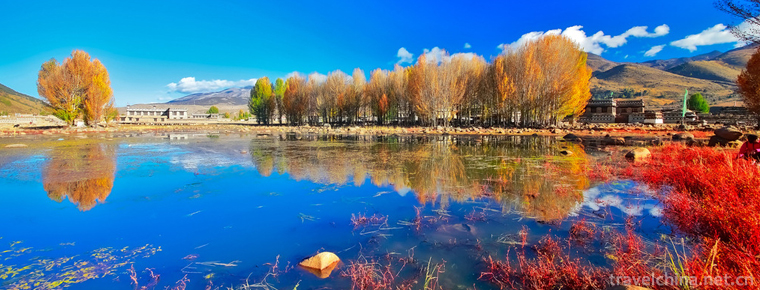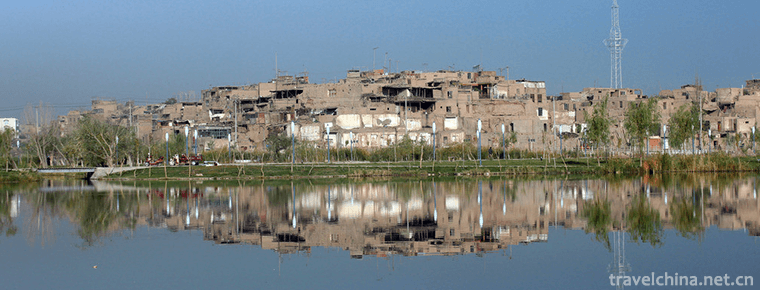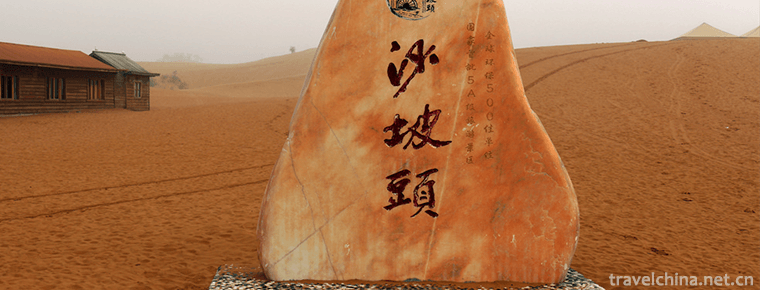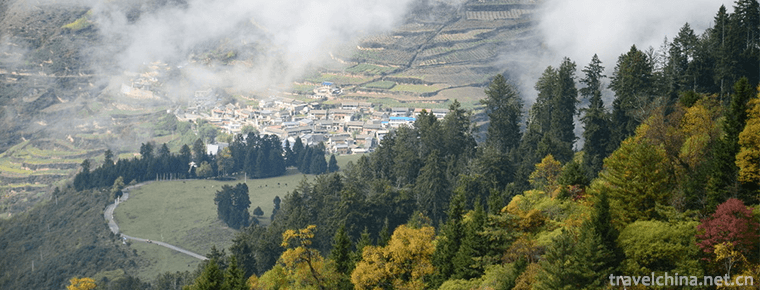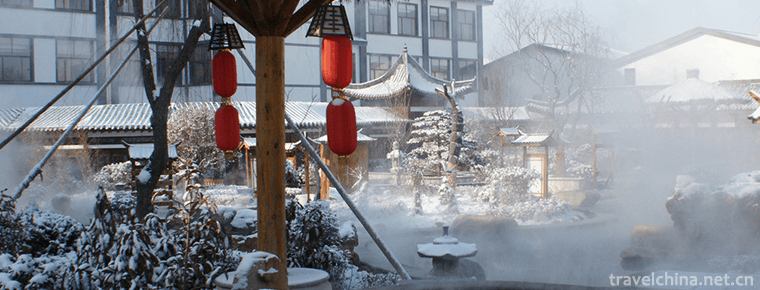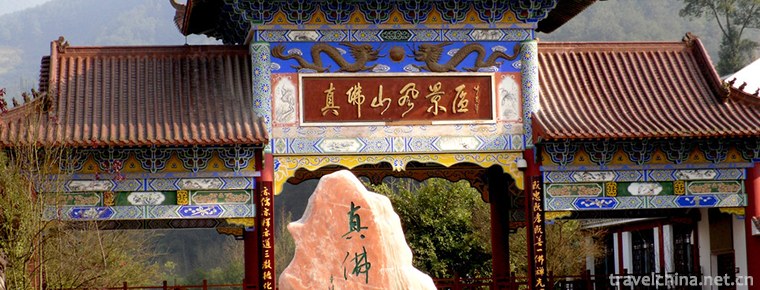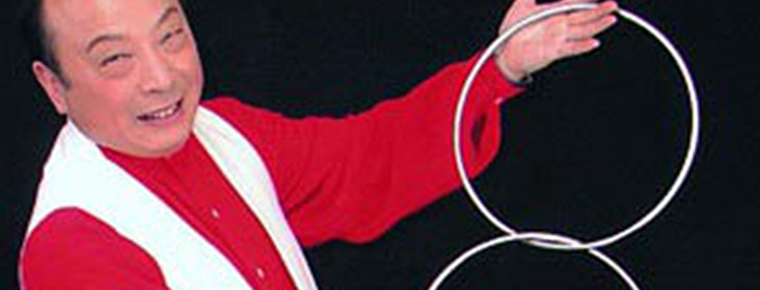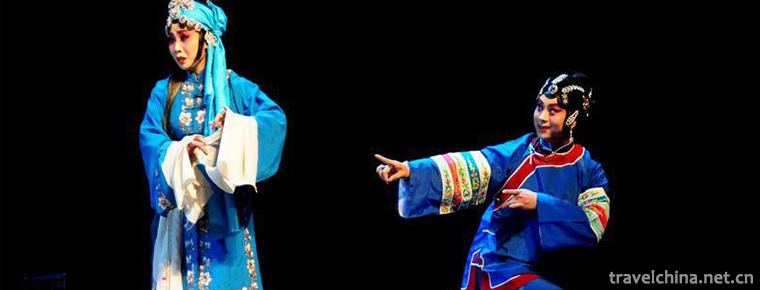Ancient plank road of Mingyue Gorge
Ancient plank road of Mingyue Gorge
Mingyuexia ancient plank road is located at the mouth of Jialing River Valley, Chaotian District, Guangyuan City. It is the starting point of national Jianmen Shu Road scenic tourism line, and is a provincial key cultural relics protection unit.
The plank road of Mingyue gorge was excavated from the Warring States period to the Song Dynasty. The earliest one has a history of more than 2300 years. Domestic experts call it "three outstanding ancient buildings comparable to the great wall and canal". In Li Bai's Shu Dao Nan, "there are six dragons returning to the sun on the top, and the shockwave and reverse fold in the lower part. It is a true portrayal of this dangerous terrain.
The Mingyue gorge, where the ancient plank road site is located, has six ancient and modern roads in one gorge, including Jialing River waterway, pre Qin plank road, Baocheng railway, qiangfu Road, national highway 108 and jinniuyi road. It is known as "China Road Traffic Museum" and "living fossil" of Chinese road traffic. It was on this ancient plank road in the pre Qin Dynasty that Xiao He renovated the plank road, Zhuge Liang went out to pray for the mountain six times, Emperor Ming of Tang Dynasty was lucky to Shu, and Li Baizhuang wrote "difficult road of Shu" and many other important historical events were staged successively, which added a strong historical and cultural accumulation to the ancient plank road.
History and culture
The world-famous ancient plank road, the great wall and the canal are listed as the three outstanding buildings in ancient China. They are the crystallization of the diligence and wisdom of the ancestors of the Shu Han Dynasty. The ancient plank road in Mingyue gorge is the most dangerous, scientific, well preserved and most ancient plank road among all the plank roads in China.
The pre Qin ancient plank road of Mingyue gorge fully embodies the three-dimensional cultural pattern of historical traffic, culture and science and technology. Its unique cultural high-grade and rich connotation make it a rare research material for scholars and a good place for nostalgic lyric and self-cultivation. Mingyue gorge was an important channel for Shu to communicate with Guanzhong and Central Plains. In the Qin and Han Dynasties, it became an important channel for the rulers to control western Qin in the north and Bashu in the south. According to historical data, the excavation of the plank road was about the end of the spring and Autumn period, to the middle of the Warring States period, has been widely used by people. It is said that Liu Bang and Xiao he settled the three Qin Dynasties in the north and entered Guanzhong through this plank road. During the Three Kingdoms period, Zhuge Liang attacked the Wei Dynasty in the north, and the Chinese army tent was also set up in the Qibi post near the Mingyue gorge. The gorge is also preserved with exquisite stone inscriptions from Song tombs, the site of Xiaohe stele, and the Ji Bi post where Zhuge Liang wrote the memorial "Hou Chu Shi Biao" during the northern expedition of Cao Wei. Many foreign friends came to Guangyuan one after another to enjoy seeing the ancient plank road. CCTV's "Shenzhou Caifeng", "Zhengda variety show" and more than 40 other TV stations produced special columns to introduce them. "People's Daily" published evaluation articles, "Romance of the Three Kingdoms", "king of Han Liu Bang", "the wreath under the mountains" and other films and TV dramas were shot on location in mingyuexia. Today, although the real ancient plank road no longer exists, but its far-reaching influence, a long history will make its name preserved in the history books, and the remains remain.
Surrounding environment
Chaotian gorge is located in the north of Guangyuan City, about 30 km away from the south of Chaotian Town, and 2 km away from the south of Chaotian town. The total length of the gorge is about 4 km and the width is about 100 m. The famous Chaotian ridge is in the East, with a depth of about 2 km. It is a canyon formed by the Jialing River breaking through the mountains. Chaotian gorge can be called the throat of Shu Road throat. It is the only channel connecting the north and the south.
Related records
"Yuanhe County atlas" records: "Jiange road from the southwest of Yichang County, Lijiang Prefecture to Dajian Town, together with today's post road Zhuge Liang, who was in charge of Shu Dynasty, chiseled the stone overhead and became a Feiliang Pavilion Road. " "Caibi Yidao wayshebei" records in detail the time, route and engineering difficulties of the maintenance of the plank road. It is an important evidence for the study of traffic roads and Zhuge Liang's Northern Expedition. In Tang, song, yuan, Ming, Qing, Republic of China and new China, the cultures in the gorge have their own characteristics, but they are all developed with the traffic road as the main body.
Poets and poets of past dynasties, such as Li Bai, Du Fu, Lu You, Yang Shen, Li Tiaoyuan and Zhang Daqian, passed through Guangyuan and left many paintings, paintings and poems.

Ancient plank road of Mingyue Gorge
-
Daocheng Yading County Ganzi Sichuan China
Aden Scenic Spot is located in Riwa Township, Daocheng County
Views: 591 Time 2018-10-12 -
Kashgar Ancient City
The ancient city of Kashgar, a national AAAAA tourist attraction, covers an area of 20 square kilometers. The capital of Shule was renamed Panzhi City, the predecessor of Shule City in the Western Han
Views: 135 Time 2018-12-12 -
Shapotou National Nature Reserve Ningxia
Shapotou: National AAAAA class tourist attraction, national desert ecological nature reserve, global environmental protection 500 best units, national fitness 20 famous landscapes, special prize for s
Views: 115 Time 2018-12-12 -
La Ga Shan
La'er Mountain is located in the South Bank of Bailong River in the southeast of Lijie Township, Zhouqu County, Gansu Province, 12 kilometers away from 313 provincial roads
Views: 138 Time 2019-01-29 -
Shandong Zhisheng Tangquan Tourist Resort
Shandong Zhisheng Tangquan Tourist Resort is located in Linyi City, Shandong Province. It is invested and constructed by Shandong Chenshi Home Estate Co., Ltd.
Views: 431 Time 2019-02-08 -
Zhenfoshan Scenic Spot
Zhenfoshan Scenic Spot, National AAAA Class Tourist Scenic Spot, Provincial Scenic Spot and Provincial Key Cultural Relics Protection Unit are the "Three Religious Holy Places" integrating B
Views: 149 Time 2019-03-17 -
Zhengzhou Yellow River Scenic Spot
The Yellow River Scenic Spot is located 20 kilometers northwest of Zhengzhou City, capital of Henan Province, on the Bank of the Yellow River. It is situated on Weiyueshan Mountain in the South and Ta
Views: 268 Time 2019-03-18 -
Bouyei Leyou
Le You and Le Lang are Buyi oboe gas song instruments. They resemble suona, bowl-less, insect whistle playing, bright and sweet timbre. It can be used for Solo or singing accompaniment
Views: 185 Time 2019-04-04 -
Fouriers Magic
Fu Tenglong, a national first-class actor and famous magic performer, is a member of the art team in the 1950s. Fu Tenglong was born in a magic family. He is an international magician who integrates p
Views: 359 Time 2019-05-04 -
Shangdang Erhuang
Pihuangqiang in Shangdang area is called Shangdang Erhuang. It is an independent opera with a history of more than 200 years. Locals call it "Tu Erhuang". At present, Shangdang Erhuang is on
Views: 191 Time 2019-06-13 -
Zhangzhou Puppet Head Sculpture
Zhangzhou puppet head carving is a traditional folk arts and crafts in Zhangzhou City, Fujian Province. It belongs to a special skill in the production of puppet stage props. Zhangzhou puppet head car
Views: 140 Time 2019-07-25 -
Deyang Education
By the end of 2018, Deyang had 856 schools, with 33000 full-time teachers and 543000 students. Among them, 339 primary schools enroll 32000 students and 185000 students; 123 junior high schools, 28000 students and 80000 students; 23 senior high schools
Views: 369 Time 2020-12-14
